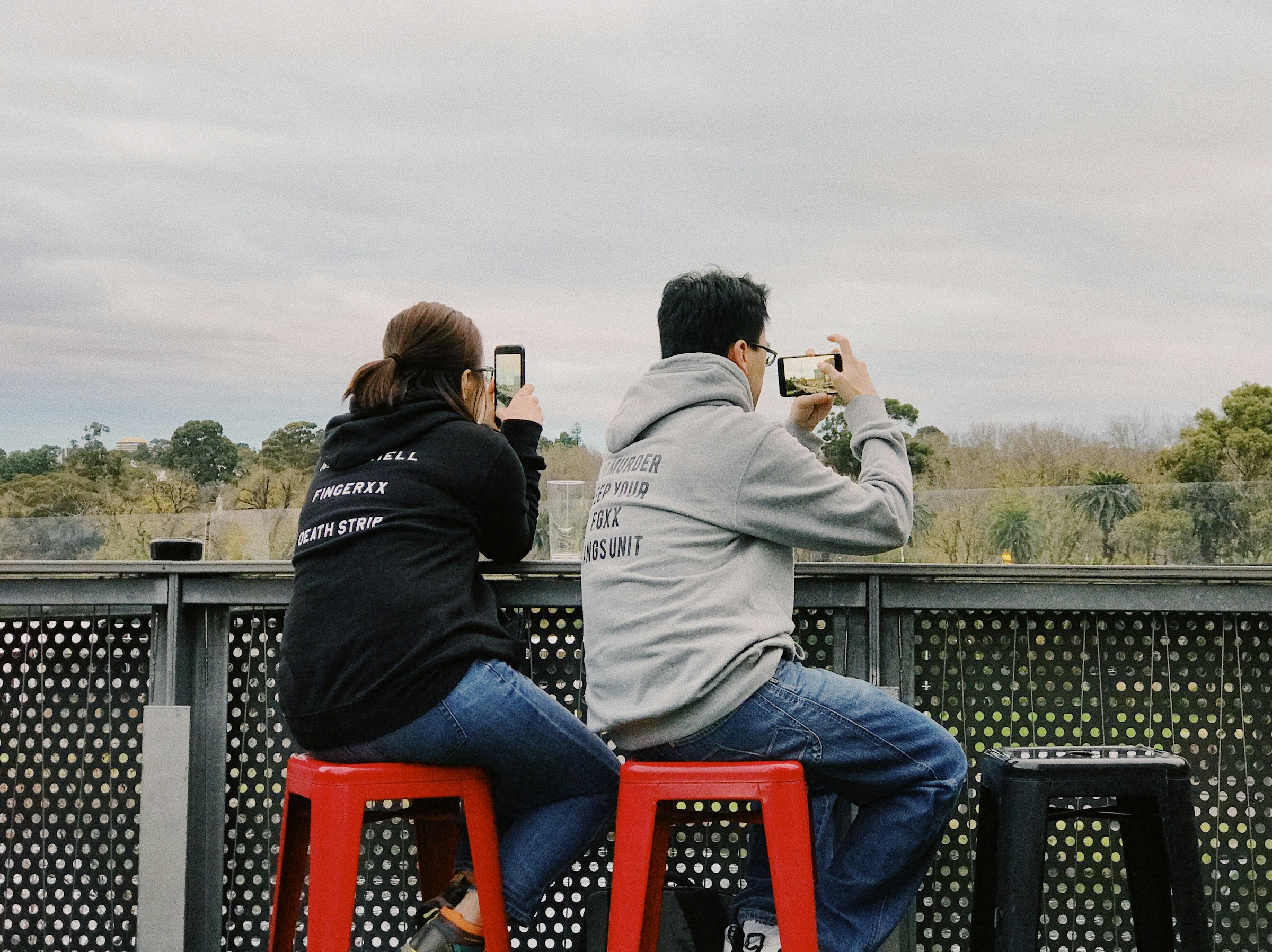Welcome to our exploration of the intersection of technology and photography, where we delve into how deep learning is revolutionizing the capabilities of smartphone cameras. As smartphone usage continues to surge, companies are harnessing the power of deep learning to improve device performance. From image processing to enhanced camera features, this technology is redefining smartphone photography.
The Rise of Mobile Photography
Smartphone cameras are no longer just a convenient way to capture moments but have evolved into powerful tools that rival professional cameras. This shift can be attributed to the leap in technology, particularly in the field of deep learning and machine learning.
A découvrir également : What Are the Capabilities of Next-Generation Firewalls in Protecting IoT Networks?
In the past, capturing high-quality images required expensive, professional cameras. However, the narrative is changing. Smartphones are now equipped with advanced cameras, capable of producing stunning images that were once deemed impossible. From capturing detailed landscapes to stunning portraits, these devices are pushing the boundaries of what we thought was achievable with mobile photography.
What is catalyzing this shift? The answer lies in the integration of deep learning into smartphone cameras. This technology is not only enhancing the features of these cameras but also revolutionizing the entire photography industry.
A voir aussi : How Are Digital Platforms Enhancing Freelance Work Opportunities in the Tech Industry?
Understanding Deep Learning in Cameras
Deep learning, a subset of machine learning, uses algorithms and neural networks to simulate human decision-making and learning capabilities. It’s a technology that powers a broad spectrum of modern applications, from Google’s search engine to advanced video games.
In the context of smartphone cameras, deep learning is used to process and enhance images. It does this by analyzing vast amounts of data, learning patterns, and making decisions based on that information. The device’s camera uses these algorithms to adjust settings automatically, optimize image quality, and even recognize faces and objects. This innovation has made it easier for users to take high-quality photos without the need for manual adjustments or professional photography knowledge.
The Role of Deep Learning in Image Processing
Image processing has been a challenging aspect of photography. This involves enhancing an image’s quality through various techniques such as adjusting brightness and contrast, removing noise, and sharpening details. Traditionally, this process required manual intervention and a good understanding of photo-editing tools.
However, the advent of deep learning has transformed this process. Smartphone cameras are now capable of performing complex image processing tasks in real-time, thanks to the integration of deep learning algorithms. These algorithms analyze the image data, identify the necessary adjustments, and apply them instantly.
The result is an image that is not only of high quality but also tailored to the photographer’s preferences. For instance, if a user frequently enhances the saturation in their images, the camera’s deep learning algorithm will learn this pattern and start applying it automatically.
Deep Learning and Camera Features Enhancement
Smartphone cameras have come a long way in terms of features. From panorama to portrait mode, time-lapse to slow-motion, these devices offer a host of options for the discerning photographer. Behind the scenes, deep learning plays a significant role in enhancing these features.
For instance, consider the portrait mode, which blurs the background to focus on the subject. This effect, known as bokeh, was previously achievable only with professional DSLR cameras. However, with deep learning algorithms, smartphones can now replicate this effect.
Deep learning algorithms analyze the scene’s depth data, distinguishing between the foreground subject and the background. This analysis allows the device to blur the background accurately, enhancing the subject’s focus and creating a professional-quality image.
Deep Learning and Video Enhancement
Along with images, deep learning is also enhancing the video capabilities of smartphone cameras. For instance, image stabilization, a feature that reduces the shakiness of videos, is being refined thanks to deep learning.
Deep learning algorithms can analyze the footage frame by frame, identifying and correcting any unwanted movements. This produces a smooth and stable video, even if the device was shaking during recording.
Moreover, deep learning is improving video quality by optimizing elements such as brightness, contrast, and color. It can even enhance low-light videos, a feature that was once a significant challenge for mobile devices.
In short, deep learning has become a key player in the evolution of smartphone cameras, transforming them from simple point-and-shoot devices into powerful photographic tools. The future of mobile photography is indeed exciting, and deep learning will undoubtedly continue to play a pivotal role.
Deep Learning and Super Resolution in Mobile Devices
The term super resolution is becoming increasingly popular in the context of smartphone cameras. Essentially, super resolution aims to enhance the resolution of an image beyond the capabilities of the camera sensor. This process involves creating high-resolution images from low-quality, blurred or pixelated inputs, which was a significant challenge for mobile devices in the past.
Deep learning algorithms have played a crucial role in overcoming this challenge. Using machine learning and neural networks, smartphone cameras can now process low-resolution images in real time, enhancing them to produce high-quality outputs. This is achieved through pattern recognition, where the algorithm learns from a vast dataset of high-resolution images.
In real-time applications, the deep learning algorithm can analyze an image, identify areas that need enhancement, and apply the necessary adjustments instantly. This enables users to capture high-resolution images even in challenging conditions, such as low light or high dynamic range scenarios.
Another exciting application of deep learning in super resolution is noise reduction in images. Noise, or visual distortion, is a common issue in digital photography, especially in low-light conditions. Deep learning algorithms can identify and eliminate this noise, resulting in cleaner, clearer images.
In summary, deep learning, with its capacity for real-time image processing and enhancement, has significantly revolutionized super resolution in mobile devices. This technology is no longer a novelty but a standard feature in modern smartphones such as the Samsung Galaxy series.
The Future of Deep Learning in Smartphone Cameras
As we look to the future, the potential of deep learning in smartphone cameras is immense. Today, we already see this technology being used to enhance images, optimize camera settings, and even add professional-level features to mobile devices. But this is just the beginning.
Tomorrow, we can expect to see even more advanced applications of deep learning and artificial intelligence in the realm of mobile photography. For instance, deep learning could be used to develop advanced computer vision capabilities, such as scene recognition and semantic segmentation.
Scene recognition would allow the camera to identify the type of scene you are shooting (such as a beach, cityscape, or forest) and adjust the settings accordingly for the best results. On the other hand, semantic segmentation involves the camera recognizing and separately processing different objects in a scene, which could lead to more accurate and sophisticated image enhancements.
Furthermore, the integration of deep learning and machine learning could lead to more personalized camera experiences. For instance, your camera could learn your photography habits and preferences and adapt its settings to suit your style automatically. This would result in a more intuitive and user-friendly photography experience, where the camera acts as your personal photography assistant.
In conclusion, deep learning is undoubtedly driving the future of smartphone photography. With its ability to learn from patterns and make intelligent decisions, this technology is transforming our devices into powerful, professional-level cameras. As technology continues to advance, our smartphone cameras will only become more intelligent, versatile, and capable. The future of mobile photography is indeed bright, and we can’t wait to see where deep learning will take us next.






